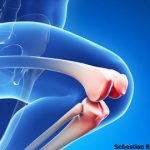(Reuters Health)—Knee replacement surgery may significantly ease pain and improve leg function and quality of life in patients with osteoarthritis or rheumatoid arthritis (RA), a new study suggests.
While surgery doesn’t restore the same level of comfort and function patients had in their younger years, before they developed arthritis, the authors write in the journal Arthritis and Rheumatology July 20 that knee replacement can serve as a time machine of sorts, turning back the clock to a point when patients were less disabled.
Researchers examined how much pain improved from six months before knee replacement until six months afterward in 315 patients with osteoarthritis and in 834 patients with RA.
“The vast majority of patients had their symptoms improve dramatically from the surgery, but this procedure is not a cure—RA patients will continue to need to treat their disease outside of the joint replacement,” senior study author Kaleb Michaud said by email.
Knee replacement is one of the most common surgeries, with about 720,000 people in the U.S. alone getting this procedure last year, according to the Centers for Disease Control and Prevention.
Michaud, a rheumatology and immunology researcher at the University of Nebraska Medical Center in Omaha, and colleagues set out to see if surgical outcomes might differ based on whether patients had rheumatoid arthritis or osteoarthritis.
While the procedure is often done to relieve chronic pain in both types of arthritis, doctors remain divided over which people are most likely to benefit.
Patients were typically in their 60s, overweight and educated at least through high school. Most of them had been living with arthritis for at least a decade.
Rheumatoid arthritis patients getting surgery in the study were more likely to be male, younger, lower weight and less educated. They also reported significantly less pain at the start of the study, six months prior to surgery.
After surgery, improvements in pain and quality of life were more pronounced for patients with osteoarthritis.
One limitation of the study is its reliance on patients to accurately assess their own pain and report changes to researchers, the authors note.
Surgery can help people with severe pain and disabilities that don’t respond to alternative treatments such as weight loss, exercise, physical therapy and medication for osteoarthritis, said Francois Desmeules, a researcher in rehabilitation at the University of Montreal.
“Patients are usually satisfied with the procedure,” Desmeules, who wasn’t involved in the study, said by email. “But they need to realize that it is good for pain relief, which is obviously important, but they might not get back to doing all the chores around the house, leisure activities and sports that they used to do.”

